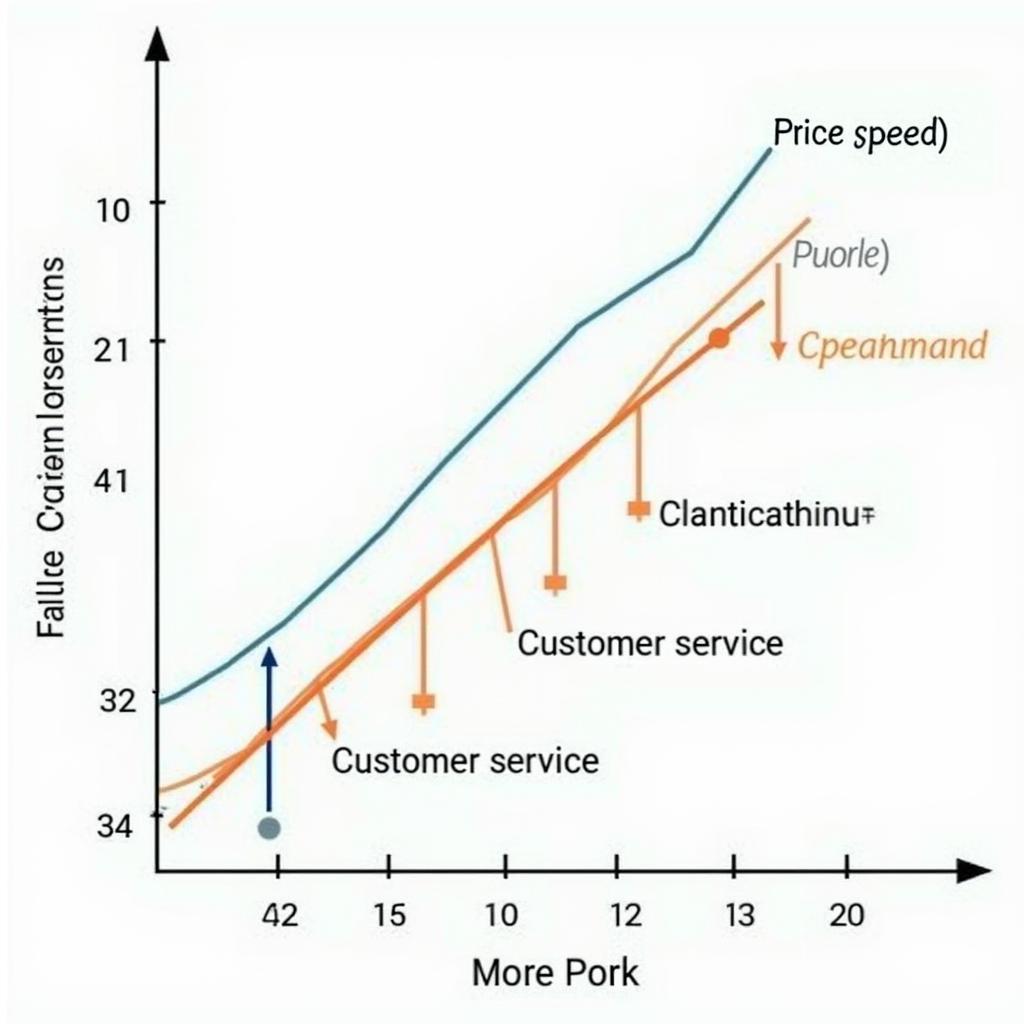The Value Curve Model For Car Services is a powerful tool for analyzing and improving your service offerings. It visually represents the key factors customers value and how your services compare to the competition. By understanding and applying this model, car service businesses can identify opportunities to differentiate themselves, enhance customer satisfaction, and ultimately boost profitability. Let’s delve deeper into the value curve model and how you can utilize it to elevate your car service business.
Car service specialists are constantly seeking ways to stand out from the competition. Applying the value curve model can help businesses identify gaps in the market and create compelling service offerings that cater to unmet customer needs. A comprehensive analysis of the competitive landscape is essential for developing a successful value curve strategy. This involves identifying the key players in the market, understanding their service offerings, and evaluating their strengths and weaknesses.
Defining the Value Curve Model
The value curve model is a graphical representation of how a product or service performs across a range of key factors that customers consider important. For car services, these factors might include price, speed of service, quality of repairs, customer service, convenience, amenities, and warranty. By plotting your performance and your competitors’ performance on a graph, you can visually see where you stand in the market and identify areas for improvement. A well-defined value curve can be a roadmap for strategic decision-making. It helps businesses prioritize investments and allocate resources effectively.
For example, a car service business might excel at providing quick and efficient oil changes but lag behind in offering comprehensive diagnostic services. The value curve model helps visualize these strengths and weaknesses, allowing the business to make informed decisions about where to focus its efforts. Perhaps they should invest in new diagnostic equipment or training for their technicians to enhance this aspect of their service.
gm operations sales and service in cars showroom illustrates the importance of a comprehensive approach to sales and service, a principle well-reflected in the value curve model.
Implementing the Value Curve Model for Your Car Service
Creating a value curve for your car service involves several steps. First, identify the key factors that customers value. This might involve surveys, customer interviews, or market research. Next, rate your performance and your competitors’ performance on each factor. This can be done on a scale, such as 1 to 10, or by using a qualitative assessment, such as high, medium, or low. Finally, plot the data on a graph to create a visual representation of your value curve.
A clear understanding of customer needs is fundamental to building a successful value curve. This requires ongoing communication with customers and a willingness to adapt to changing market demands. It allows car service providers to focus on the aspects of their services that truly resonate with customers.
Once you have your value curve, you can use it to identify opportunities to create and capture value. For instance, you might find that you are over-serving customers on a certain factor, meaning you are providing more than they are willing to pay for. In this case, you could reduce your costs by reducing your level of service on that factor without sacrificing customer satisfaction.
Understanding the local market dynamics is crucial for tailoring your value curve to the specific needs of your target audience. This includes considering factors such as demographics, competition, and local regulations.
Leveraging the Value Curve for Competitive Advantage
The value curve model can be used to develop a variety of competitive strategies. One approach is to create a “blue ocean” by offering a unique combination of factors that no other competitor offers. For example, you could offer a premium car service with a focus on convenience and personalized attention. Another approach is to focus on a specific niche market, such as luxury car owners or eco-conscious drivers.
car service schedule spreadsheet can be a valuable tool for managing and optimizing your services, which indirectly contributes to a stronger value curve.
Developing a strong value proposition requires a deep understanding of your target audience and their specific needs. This includes identifying their pain points, preferences, and expectations.
Successfully implementing a value curve strategy requires ongoing monitoring and adjustments based on market feedback. Continuous improvement is essential for maintaining a competitive edge.
Key Considerations for Building Your Value Curve
When building your value curve, keep the following considerations in mind:
- Focus on what matters to customers: Don’t waste resources on factors that customers don’t value.
- Be realistic: Don’t overestimate your capabilities or underestimate your competitors.
- Be flexible: The market is constantly changing, so be prepared to adjust your value curve as needed.
- Communicate your value: Make sure your customers understand the value you offer.
nextgen bosch car service review provides an example of how one company is innovating in the car service space, which can provide valuable insights for shaping your own value curve.
Conclusion
The value curve model for car services provides a powerful framework for analyzing the competitive landscape and identifying opportunities to create and capture value. By understanding and applying this model, you can differentiate your business, enhance customer satisfaction, and drive profitability. So, start analyzing your value curve today and unlock the potential of your car service business. The value curve model offers a clear path to strategic growth and enhanced profitability.
FAQ
-
What is the value curve model?
The value curve model is a graphical representation of how a product or service performs across a range of key factors that customers consider important. -
How can I use the value curve model for my car service?
You can use the value curve model to identify your strengths and weaknesses, understand your competitors, and develop competitive strategies. -
What are some key factors to consider when building a value curve?
Key factors include price, speed of service, quality of repairs, customer service, convenience, amenities, and warranty. -
What is a “blue ocean” strategy?
A “blue ocean” strategy is creating a unique combination of factors that no other competitor offers. -
How can I communicate my value to customers?
Use clear and concise messaging that highlights your unique selling points and the benefits of choosing your car service.
Common Scenarios and Questions
-
Scenario: A customer is price-sensitive and looking for the cheapest oil change.
-
Question: How can I offer a competitive price without sacrificing quality?
-
Scenario: A customer needs their car repaired quickly.
-
Question: How can I streamline my service process to minimize turnaround time?
Further Exploration
Explore further with these related resources: mba car service.
Need more assistance? Contact us via WhatsApp: +1(641)206-8880, or email us at [email protected]. We have a 24/7 customer service team ready to help.

